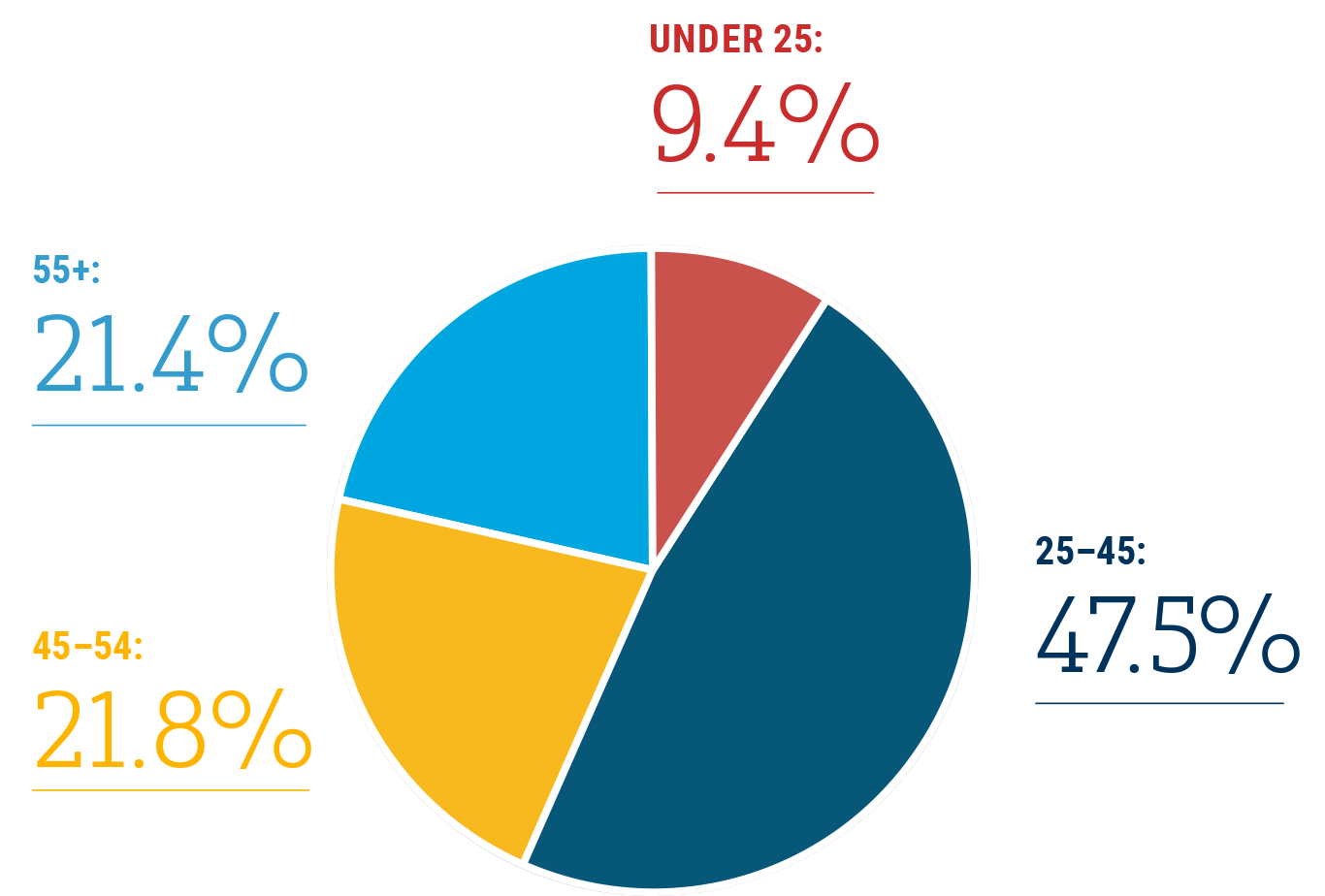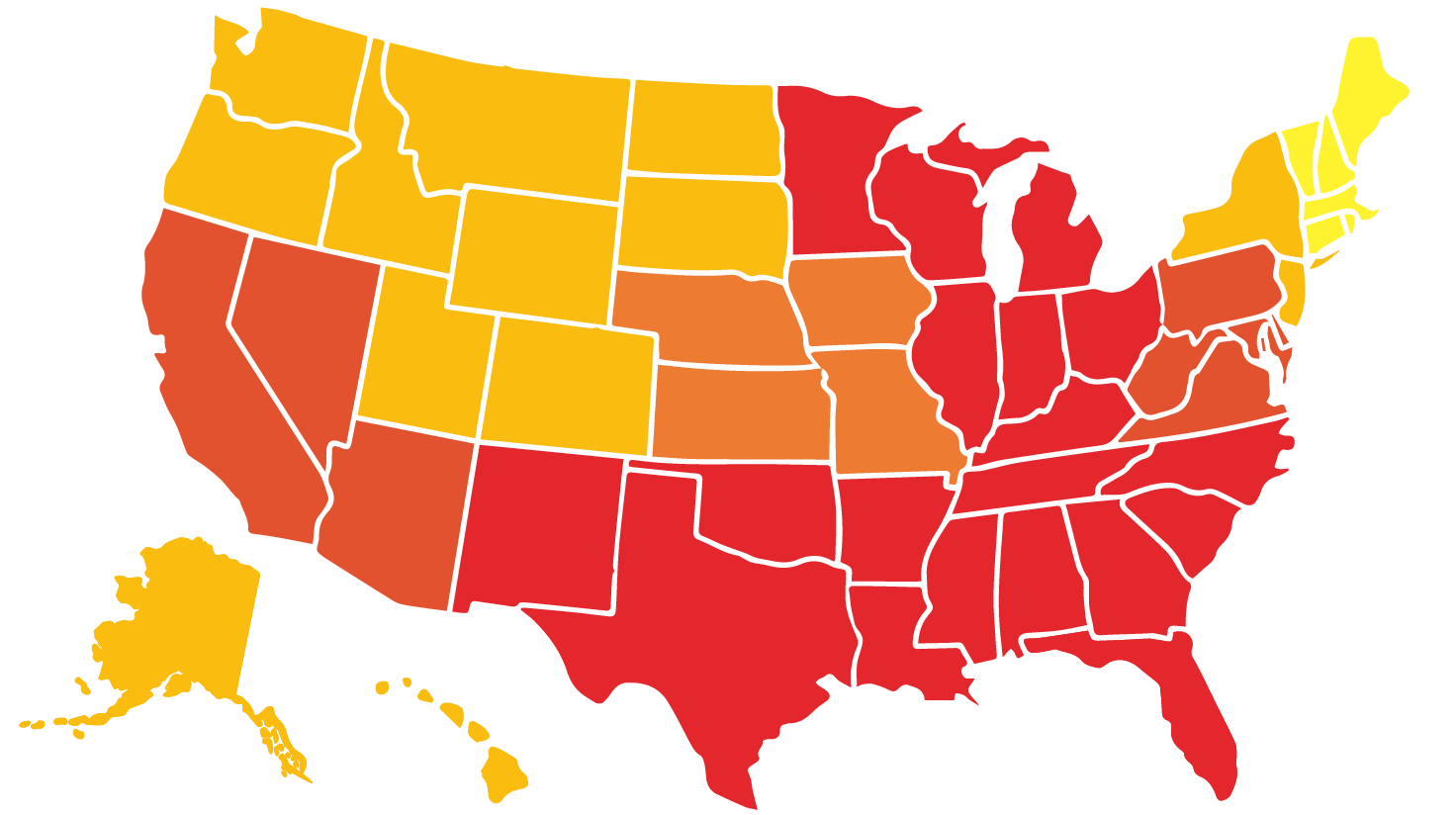Shining a light
on the welding workforce.
High demand. Skills gap. Critical need. These are just a few terms that describe the outlook of the welding workforce.
While it’s true that many skilled welders are needed to meet future demand, the situation is nuanced and also speaks to the opportunities awaiting professionals entering the field or those considering a career change.
Below you’ll find the most recent welding workforce data and projections endorsed by the American Welding Society (AWS).
Demand for welding professionals
in the upcoming years.
330,000
New welding professionals projected to be needed by 2028.
82,500
Average welding jobs to be filled annually between 2024–2028.
Why the need?
CURRENT
OPENINGS
+ INDUSTRY GROWTH
Increased number of jobs
+ ANTICIPATED ATTRITION
Professionals retiring, advancing,
changing industries, etc.
= PROJECTED OPENINGS
What counts as a welding professional?
The AWS Foundation combines six occupations (defined by the Bureau of Labor Statistics) where welding is a primary job function:
Learn more about these occupations and others at careersinwelding.com >
Snapshot of the current welding workforce.
771,000
Estimated U.S. welding professionals, as of 2024.
AGES OF CURRENT WELDERS

![]()
More than 159,000 welding professionals
ARE APPROACHING RETIREMENT
WORKFORCE DEMOGRAPHICS
%
Percentage of welders
who are WOMEN

%
Percentage of welders who are
NON-WHITE OR OF MULTIPLE RACES.

How much do welding professionals make?
Wages for welding professionals can vary by location, occupation, certifications, experience level, and other factors.
Average hourly earnings for welding jobs:
$25.96
National median salary for welding jobs:
$53,500
National median salary for various welding careers:
See the complete list of salaries at careersinwelding.com
Where are the most welding jobs located?
How the current welding workforce is distributed, by region (2024):

151,000
135,000
146,000
82,000
48,000
62,000
34,000
25,000
33,000
34,000
Education and training for welding careers.
There are multiple options to receive formal training and start a career in the welding industry.
TYPE OF TRAINING
TYPICAL LENGTH OF PROGRAM
CREDENTIAL EARNED
TECHNICAL SCHOOL
6–18 mos.
Welding Certificate
Technical School
6-18 months
Welding certificate
Community College
2 years
Associate degree
COMMUNITY COLLEGE
2 years
Associates Degree
Apprenticeship
3-4 years
Journeyman’s card
APPRENTICESHIP
3-4 years
Journeyman’s card
University
4 years
Bachelor’s degree
UNIVERSITY
4 years
Bachelor’s degree

Attending a technical school to become a welder is an investment that pays off quicker than pursuing a four-year degree
What’s being done?
The AWS Foundation is actively working to build a larger, higher-skilled, and more diverse welding workforce by supporting various scholarships, grants, and other education initiatives.
$2.4 million+
$2.4 million+
Total scholarships awarded annually by the AWS Foundation.
1,600+
1,600+
The number of scholarship recipients, representing more than 400 different academic and training institutions.
22%
22%
Share of scholarships awarded to female welding students.
$3M +
$3 million+
Total graduate research fellowships awarded to support research projects in welding, additive manufacturing, and other allied technologies.
$2.3M+
$2.3 million+
Total grants awarded to welding schools since 2017.
Media inquiries.
For more information or comment from the AWS Foundation, please contact us at [email protected].
To receive future updates on the welding industry, sign up for our mailing list.








